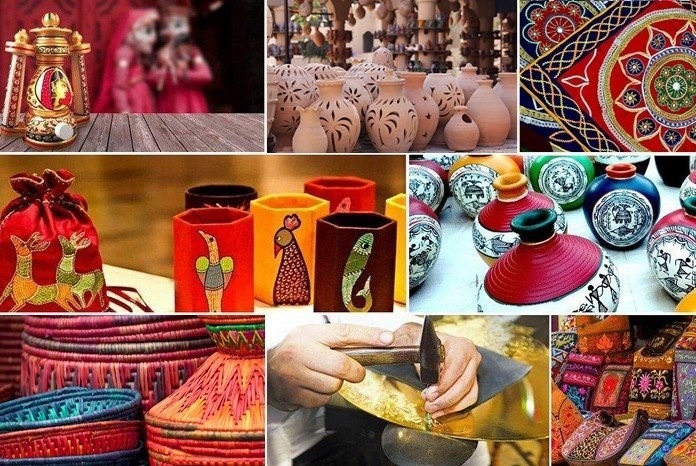EXPLORE THE CULTURE OF INDIA
“The strength of our nation lies in our ability to recognize and embrace our diversity, fostering unity across all communities.”
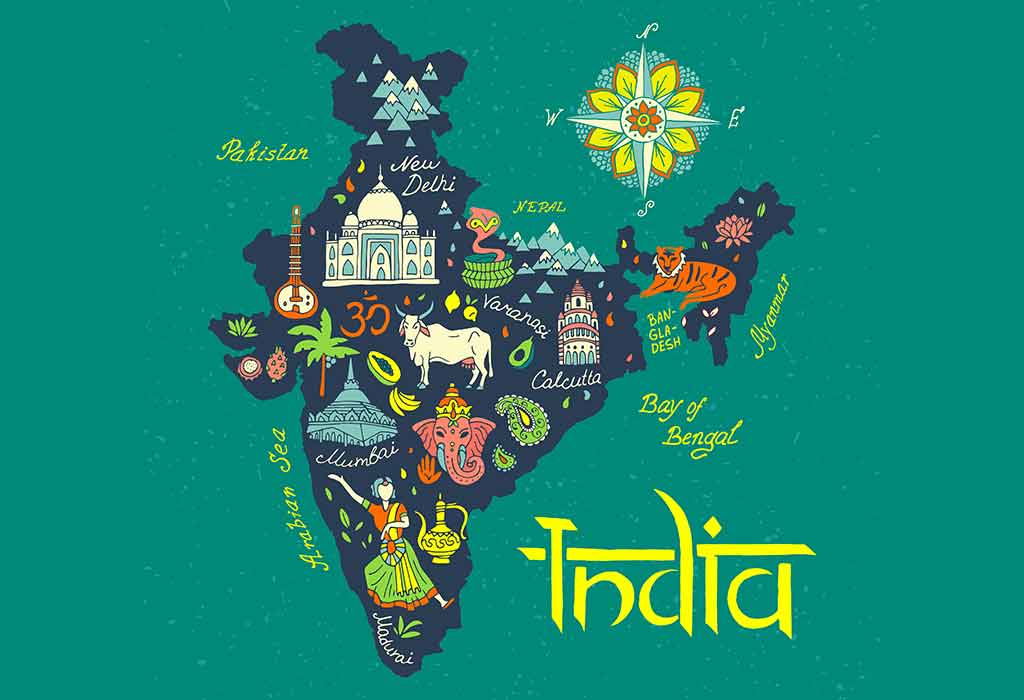
Indian culture is one of the oldest and most diverse in the world, shaped by centuries of history, geography, and a myriad of influences. It dates back to the Indus Valley Civilization (c. 2500–1500 BCE), known for its advanced urban planning and trade networks.
The Vedic period (c. 1500–500 BCE) introduced key philosophical and spiritual texts, forming the foundation of Hinduism. This era saw the rise of various religions, including Buddhism and Jainism, which emphasized ethical living and non-violence.
The Maurya and Gupta Empires (c. 322 BCE–550 CE) marked a golden age of art, science, and literature, with significant advancements in mathematics and astronomy. The influence of Islamic rule from the 12th century brought new cultural elements, leading to a rich synthesis seen in architecture, music, and cuisine.
Colonialism in the 19th century further transformed Indian society, igniting nationalist movements that ultimately led to independence in 1947. Today, India is a tapestry of languages, traditions, and beliefs, celebrated in festivals, music, dance, and art, reflecting a continuous evolution that honors its ancient roots while embracing modernity.
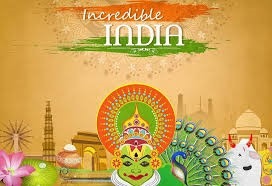
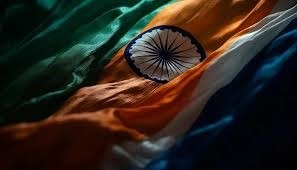

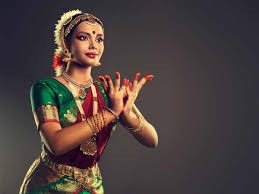
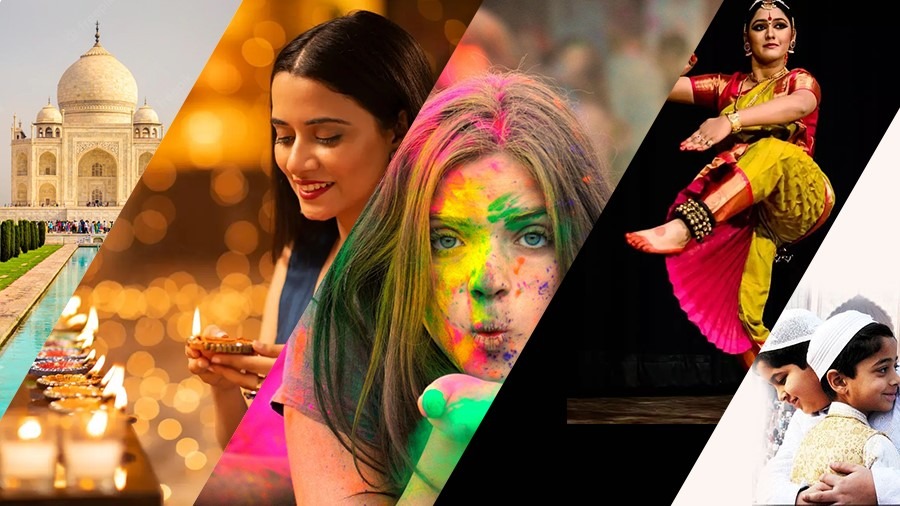
TRADITIONS AND CUSTOMS
Greetings
Indian culture is rich in traditions and rituals, and greetings play an essential role in social interactions. One of the most common greetings is “Namaste,” derived from Sanskrit, meaning “I bow to you.” It is accompanied by a slight bow and hands pressed together in a prayer-like gesture, symbolizing respect and acknowledgment of the divine in others.
In various regions, greetings may vary. For instance, in Punjabi culture, one might say “Sat Sri Akal,” while in Tamil Nadu, “Vanakkam” is often used. Each greeting reflects the local language and customs, emphasizing respect and warmth.
Greetings are often accompanied by inquiries about one’s well-being and family, highlighting the importance of relationships in Indian society. During festivals or special occasions, people may greet each other with “Shubh Diwali” or “Eid Mubarak,” wishing joy and prosperity.
In rural areas, a handshake or a hug might be common among friends, while in more traditional settings, touching the feet of elders as a sign of respect is customary. Overall, greetings in Indian culture convey deep respect, hospitality, and a sense of community, making them an integral part of daily life.
Food
Indian cuisine is a vibrant reflection of the country’s rich cultural diversity, regional ingredients, and historical influences. It is characterized by its use of a wide array of spices, herbs, and cooking techniques that vary from region to region.
Each state boasts its unique culinary traditions. For instance, North Indian dishes like butter chicken and paneer tikka are often enjoyed with naan or roti, while South Indian cuisine features dosa, idli, and sambar, emphasizing rice and lentils. In the East, Bengali cuisine is renowned for its fish dishes and sweets like rasgulla, whereas West Indian fare includes spicy curries and dhokla.
Vegetarianism is prevalent, influenced by religious beliefs, particularly in Hinduism, Jainism, and Buddhism. As a result, many Indian dishes are plant-based, incorporating legumes, vegetables, and dairy products. Spices such as turmeric, cumin, coriander, and cardamom not only enhance flavor but also offer health benefits.
Food is central to Indian culture, often served during festivals and family gatherings. Meals are typically communal, with everyone sharing dishes, reinforcing bonds and hospitality. Traditional meals are often accompanied by rituals, such as the breaking of bread and the serving of sweets.
Street food is another significant aspect of Indian culinary culture, with popular items like chaat, pani puri, and vada pav available in bustling markets. Overall, Indian food is not just about sustenance; it embodies history, culture, and a sense of belonging, making it a vital part of the Indian identity.

Religion
Indian culture is deeply intertwined with its religious traditions, which are among the most diverse and ancient in the world. The major religions that originated in India include Hinduism, Buddhism, Jainism, and Sikhism, each contributing unique philosophies, practices, and festivals.
Hinduism, the predominant religion, emphasizes a vast pantheon of deities, sacred texts like the Vedas and Upanishads, and concepts such as dharma (duty) and karma (action and consequence). Major festivals like Diwali, Holi, and Navaratri reflect the vibrant rituals and communal spirit of Hindu life.
Buddhism, founded by Siddhartha Gautama (the Buddha) in the 5th century BCE, teaches the path to enlightenment through practices such as meditation and ethical living. Jainism, emphasizing non-violence and truth, promotes a lifestyle of asceticism and respect for all living beings.
Sikhism emerged in the 15th century, advocating for equality, community service, and devotion to one God. Its sacred scripture, the Guru Granth Sahib, guides followers in their spiritual and ethical lives.
Islam and Christianity have also made significant inroads in India, with vibrant communities contributing to the cultural mosaic. Festivals like Eid and Christmas are celebrated alongside traditional Hindu festivities, reflecting a spirit of inclusivity.
Religious diversity in India fosters a rich tapestry of cultural practices, rituals, and values, shaping the identity and social fabric of the nation. This pluralism is a testament to India’s enduring legacy of tolerance and coexistence.
Arts and crafts
Indian culture boasts a rich heritage of arts and crafts, reflecting its diverse traditions and regional influences. Traditional art forms include painting styles like Madhubani, Warli, and Tanjore, each with unique themes and techniques. Handicrafts, such as pottery, weaving, and woodwork, showcase intricate craftsmanship and local materials.
Textiles are particularly significant, with each region known for its specialty—like silk from Varanasi, wool from Kashmir, and cotton from Gujarat. Hand-embroidered garments, like phulkari and chikan, highlight the artistry of local artisans.
Indian classical dance forms, including Bharatanatyam, Kathak, and Odissi, express storytelling through intricate movements and facial expressions, while music genres like Hindustani and Carnatic resonate with spiritual and emotional depth.
Festivals often feature vibrant arts, from decorative rangoli to elaborate idol-making, reinforcing the cultural connection between creativity and community celebrations. This artistic heritage not only preserves history but also fosters a sense of identity and pride among Indians.
